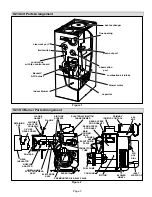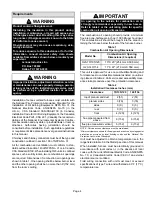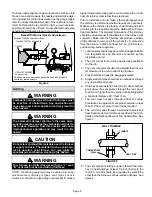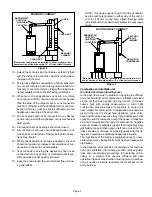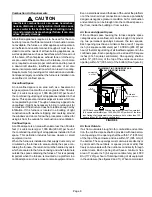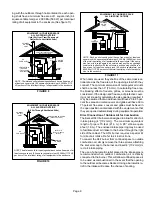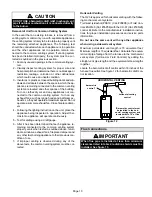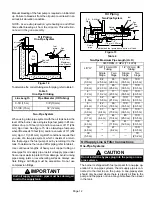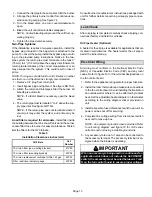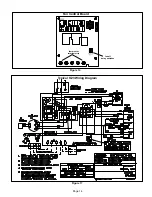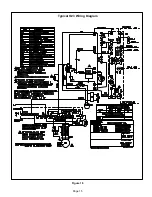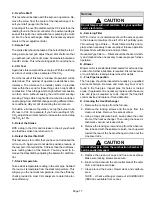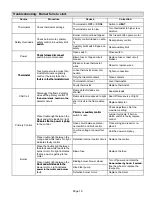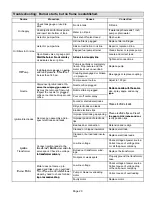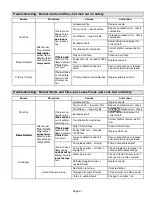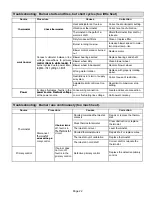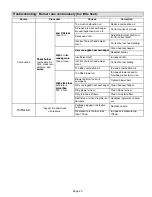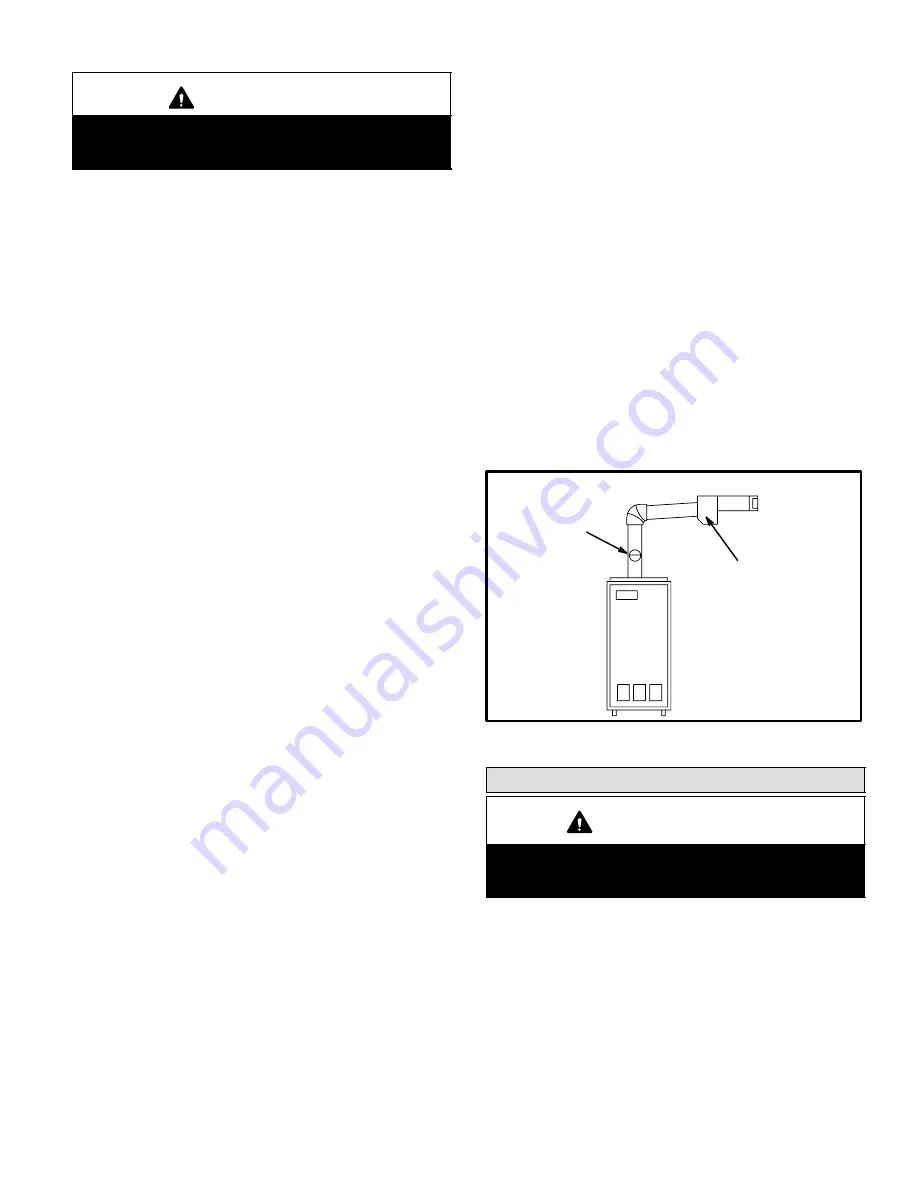
Page 10
CAUTION
DO NOT USE a barometric draft relief in exhaust vent
pipe if outdoor combustion air is connected directly
to the burner.
Removal of Unit from Common Venting System
In the event that an existing furnace is removed from a
venting system commonly run with separate appliances,
the venting system is likely to be too large to properly vent
the remaining attached appliances. The following test
should be conducted while each appliance is in operation
and the other appliances not in operation remain con-
nected to the common venting system. If venting system
has been installed improperly, the system must be cor-
rected as outlined in the previous section.
1 − Seal any unused openings in the common venting sys-
tem.
2 − Visually inspect venting system for proper size and
horizontal pitch and determine there is no blockage or
restriction, leakage, corrosion or other deficiencies
which could cause an unsafe condition.
3 − Insofar as is practical, close all building doors and win-
dows and all doors between the space in which the ap-
pliances remaining connected to the common venting
system are located and other spaces of the building.
Turn on clothes dryers and any appliances not con-
nected to the common venting system. Turn on any
exhaust fans, such as range hoods and bathroom ex-
hausts, so they will operate at maximum speed. Do not
operate a summer exhaust fan. Close fireplace damp-
ers.
4 − Following the lighting instruction on the unit, place the
appliance being inspected in operation. Adjust ther-
mostat so appliance will operate continuously.
5 − Test for spillage using a draft gauge.
6 − After it has been determined that each appliance re-
maining connected to the common venting system
properly vents when tested as outlined above, return
doors, windows, exhaust fans, fireplace dampers and
any other fuel burning appliance to their previous con-
dition of use.
7− If improper venting is observed during any of the
above tests, the common venting system must be cor-
rected.
Horizontal Venting
The O23 is approved for horizontal venting with the follow-
ing mechanical vent systems:
Tjernlund (sideshot) #SS1C (Cat. #35E08) or Field Con-
trols #SWG−5 (Cat. #35P08) with the CK−61 (Cat. #18N28)
control kit. Refer to the manufacturers’ installation instruc-
tions for proper installation procedures and service parts
information.
Do not use the same vent with any other appliance
when using a sidewall vent system.
Maximum permissible vent length is 70 equivalent feet.
Minimum length is 15 equivalent feet. Calculate the equiva-
lent vent pipe footage from the furnace to the mechanical
vent system (Tjernlund or Field Controls) by adding the
straight vent pipe length and the equivalent elbow lengths
together.
Locate the barometric draft control within 18 inches of the
furnace flue outlet. See figure 12 for barometric draft con-
trol location.
HORIZONTAL VENTING
barometric
control*
horizontal venting
control
Figure 12
*Barometric control must
be installed in the hori-
zontal venting system and
located within 18" of flue
outlet of furnace.
Flue Connections
IMPORTANT
When flue pipe is installed at less than minimum
clearance listed in table 2, radiation shields must be
installed. See figure 13.



